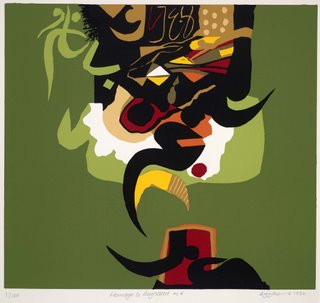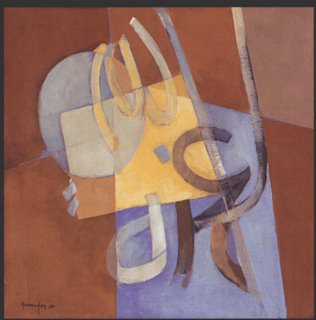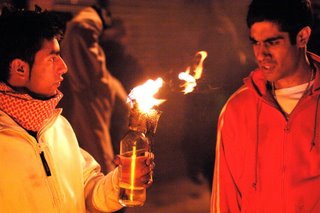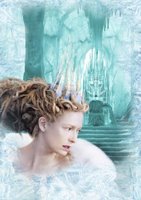
The debut CD of Palestinian singer Reem Kelani - "Sprinting Gazelle: Palestinian Songs from the Motherland and the Diaspora" - is a major new contribution from this remarkable singer, musical researcher and broadcaster towards reviving and spreading Palestinian culture through music.
In the weeks since "Sprinting Gazelle" was released in the UK it has been acclaimed by critics and journalists and has received excellent reviews in nearly every serious British newspaper, as well as in music magazines and other publications. Many critics have praised highly the quality, range and emotional depth of Kelani's voice.
Kelani told Al-Hayat in an interview that she is "overwhelmed" by the avalanche of positive media coverage the CD has enjoyed.
The London magazine Time Out not only gave the CD a very favourable review, but also put it at the top of its list of the top six new albums. The CD has been featured on radio stations in countries including Britain, Germany, Australia and the US.
The widespread praise of the CD from critics is all the more remarkable given the fact that Kelani made it independently, with the small Fuse label as a "cover label". She lacks the strong production, marketing and promotion muscle of a major recording company. But through remaining independent she has been free of pressures to make musical and cultural compromises.
The preparation and recording of the CD took Kelani and her husband Chris Somes-Charlton two years of intensive work. They put most of their savings into the project and received further financing from family, friends and supporters. They have not even organised a concert to launch the CD "because we could not afford the logistics, the time or the money." Now they are busy marketing the CD through Kelani's website and in record stores through the distribution company Proper Music.
The CD's ten songs take the listener on a 74-minute odyssey through the Palestinian experience, from the nineteenth century until today. The CD comes with a highly informative and attractive 32-page booklet which contains the Arabic words to the songs, and translations into English poetry.
Some of the songs are Reem's arrangements of traditional songs. Others are Kelani's compositions for poems by such important Palestinian poets as Mahmoud Darwish, Rashid Husain, Salma Khadra Jayyusi and Mahmoud Salim al-Hout.
A number of the songs are sombre in mood, including Kelani's music for the Mahmoud Darwish poem "Mawwal: Variations on Loss". Kelani wrote the music for this song in 1992 for a BBC TV documentary on the tenth anniversary of the massacre in the refugee camps of Sabra and Shatila in Beirut.
She dedicates "Yearning" by Rashid Husain to the late French singer Barbara "whose music taught me to turn anger into inner peace."
Other songs are more upbeat, such as the spirited traditional song "Habl el-Ghiwa", which is performed with a very jazzy, danceable feel.
The CD has spiritual depth and rewards repeated listening. Asked about the narrative thread running through the CD, Kelani says that after choosing the songs "I realised that they are all either by poets that are pre-48 Palestine or areas that are pre-48 Palestine." She describes the narrative as "totally non-compromising," as shown by a song like "Qasidah of Return", with words by Salma Khadra Jayyusi, which has a mood of "total defiance".
The final song "Il-Hamdillah" is a medley of two songs, "Il-Hamdillah and "Intu Banatu, Ihna Banana". These two songs show the "somoud" of the Palestinians and celebrate their collective identity, "something that the last 58 years couldn't impoverish, quite the contrary, they enriched it."
Kelani says that from women in refugee camps she got the message "that I now use in my life as a Diaspora Palestinian - personally, collectively and artistically - that we are not victims. You are not a victim even when you are in pain, even if someone has done you wrong. You get on with life, you acknowledge your pain and you're strong and you celebrate and you sing and dance. She adds: "This is resistance in its purest form."
Reem's core group of musicians consists of the award-winning jazz pianist Zoe Rahman; Zoe's brother Idris Rahman on tenor saxophone, clarinet and bass clarinet; Oli Hayhurst on double bass; Patrick Illingworth on drums; the Egyptian violinist Samy Bishai, and the Iranian percussionist Fariborz Kiani.
The first song "As Nazarene Women Crossed the Meadow" is a dramatic start to the CD, featuring Kelani singing to no accompaniment but that of a vocal drone. According to local Nazarene folklore, women sang this song when they said goodbye to their men who were leaving to serve in the Ottoman Army. The arrangement of the song " "was principally inspired by a visit I paid to St Gabriel Geek Orthodox Church in Nazareth during one of my childhood summers there. I was mesmerised by the Eastern Christian chanting that I heard which had such striking similarities with Muslim religious chanting. My rendition pays tribute to the historically ecumenical tradition of Nazareth and is an attempt to keep this tradition going in increasingly difficult times."
The song is followed by another furaaqiyaat (song of parting), "The Cameleer Tormented my Heart."
Kelani sees no contradiction in being a jazz singer who is a Palestinian. "Both disciplines are based on improvisation, both disciplines come from suffering and from emancipation."
The CD works on two levels. Kelani's voice with its extraordinary range and timbre makes a direct emotional impact. Even for those listeners who do not understand the Arabic of the words there is no mistaking the emotions that are being expressed - range, tenderness, joy, sorrow, defiance. But beyond this, the accompanying booklet helps non-Arab listeners to get further inside the experience of the songs through reading the lyrics in English and through Reem's detailed information on each song. The booklet also contains a glossary of Arabic musical and cultural terms.
Kelani carried out the translations of the songs into English with her husband, and with Salma Khadra Jayyusi as the literary consultant. The poetry consultant to the project, well-known British poet Alan Brownjohn, made suggestions.
The cover illustration of the CD and of the booklet portrays a gazelle on a background of canvas which represents the Palestinian costume for embroidery, and at the same time the earth and sense of belonging.
The delicate plant with yellow flowers that adorns the cover and inside pages of the booklet is feijan - a herb found in the area of Nazareth from where Kelani's mother's family comes.
The value of the booklet providing the translated lyrics and the background to the songs was illustrated recently when a BBC Radio 3 programme featured "Sprinting Gazelle" and played several songs from it.
Thepresenter explained that the words of the song "Yafa!" were written by the Palestinian poet, mythologist and translator Mahmoud Salim al-Hout (1917-88) after he lost all his manuscripts while fleeing Jaffa.
In this evocative song of loss and pain Kelani is accompanied only by pianist Zoe Rahman playing ominous deep rumbles overlain with agitation. The effect is that of a soulful meditation.
Kelani was born in Manchester, northern England, to doctor Yusuf Kelani, from the village of Ya'bad near Jenin, and Yusra Sharif Ali Zu'bi from Nazareth. Reem dedicates the CD to her mother, who died in Amman in 2004, and "to all the 'Big Mamas' who taught me to sing and to belong." In her concerts Kelani often pays tribute to the "Big Mamas", most particularly the old ladies in Palestinian refugee camps from whom she has collected songs.
Kelani grew up in Kuwait where she was surrounded by many different kinds of music. The songs her father sang kindled the devotion to jazz that has been with Kelani ever since. At the age of 13 she fell in love with Palestinian music when she went to a family wedding in the village of Nein near Galilee and saw women singing and dancing.
A marine biologist by university education, she first came to London in 1989 on a British Council scholarship to do an MSc in aquatic resource management at King's College. But before long she decided to pursue her ambition of a musical career.
Kelani has attracted a large and growing following of fans who appreciate her unique blend of Palestinian music and jazz, her superb voice, her charismatic and warm stage presence and her ability to strike up a rapport with widely differing audiences. She has performed at concerts in the UK, US, Canada, Middle East and Europe, often at events to raise funds for Palestinian charities.
Her broadcasting work has included presenting two series of BBC Radio Four's 'Distant Chords' in which she interviewed musicians in exile in Britain from countries including Yemen, Afghanistan, Armenia and Portugal. Kelani has also been involved in educational work, starting with music workshops at the British Museum. Last autumn she was the music consultant for the play "Iman: Walled In, Walled Out" performed by children at the Miskin Theatre in Dartford.
Kelani has found it difficult to find suitable musicians in London, and it took a long time to assemble her band. None of the musicians on her CD is Palestinian. She says: "Playing with people of different nationalities was very challenging because they didn't know anything about the music."
Another challenge was finding a recording label. The political folk singer and song writer Leon Rosselson offered his own Fuse Records label as the "cover label" of the CD.
Kelani says that many musicians based in the Middle East assume that musicians based in the UK or America are lucky. "They don't realise that the 'world music' circles here actively ignore the local talent around them." A foreign musician like her based in the UK tends to be neglected in favour of more "exotic" musicians brought from abroad. "Even if I were based in Paris I would have been more exotic." She considers that "in a way, being in the UK has hindered the launching of my career."
It was radio stations in other countries - America, Australia and Germany -that started playing the CD long before the BBC did, despite the fact that Reem regularly works for the BBC.
The release of the CD comes at a particularly difficult time for the Palestinian people, a time when culture has a more important role to play than ever in helping to convey the Palestinian identity and experience. As Kelani says: "unless people listen to, and acknowledge, the Palestinian narrative in its own right, no peace treaty, peace accord or peace settlement will work. The Palestinian narrative has always been robbed of its independence and authenticity."
Susannah TarbushOriginal of article published in Arabic translation in Al-Hayat newspaper, May 2 2006










